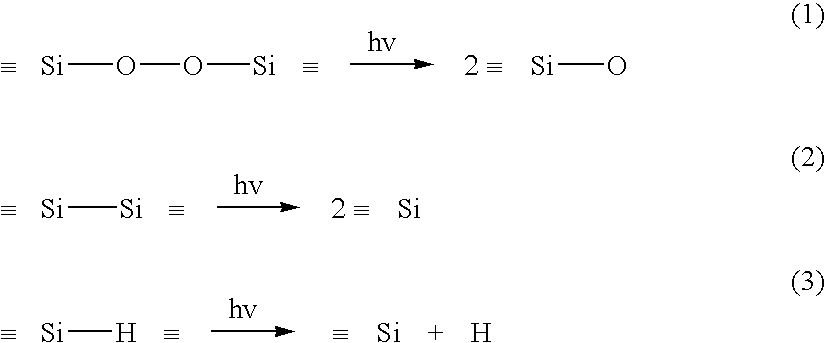Synthetic quartz glass for optical member and its production method
a technology of optical components and synthetic quartz, applied in glass deposition burners, instruments, manufacturing tools, etc., can solve the problems of reducing the light transmittance but also the phenomenon of compaction and rarefaction, affecting the image-formation performance of projection lenses, and unable to transfer the required pattern, etc., to achieve excellent uniform refractive index. , the effect of excellent uniformity
- Summary
- Abstract
- Description
- Claims
- Application Information
AI Technical Summary
Benefits of technology
Problems solved by technology
Method used
Image
Examples
examples
[0046]Now, the present invention will be explained in further detail with reference to Examples of the present invention and Comparative Examples. However, the present invention is by no means restricted to such specific Examples.
examples 1 to 23
[0047]Employing the material and the proportion of a hydrogen gas to an oxygen gas as shown in Table 1, a porous synthetic quartz glass body is prepared by oxyhydrogen flame hydrolysis method (VAD method), and the obtained porous synthetic quartz glass is installed in a tubular electric furnace capable of controlling the atmosphere and employing a molten quartz glass tube as a core tube. Then, the synthetic quartz glass body is subjected to a heat treatment under conditions as shown in Table 1. Then, the porous synthetic quartz glass is installed in a graphite furnace and subjected to a heat treatment under conditions as shown in Table 1 to obtain a transparent synthetic quartz glass block (diameter 200 mm×length 600 mm). The obtained synthetic quartz glass block is installed in a mold made of graphite having a diameter of 400 mm, and the temperature is increased to 1,750° C. in an atmosphere of 100% argon gas under 101 kPa to form the glass block into a diameter of 400 mm. Then, th...
examples 24 to 26
[0048]Employing the material and the proportion of a hydrogen gas to an oxygen gas as shown in Table 1, a transparent synthetic quartz glass block (diameter 200 mm×length 600 mm) is directly prepared by oxyhydrogen flame hydrolysis method (direct method). The obtained synthetic quartz glass block is installed in a mold made of graphite having a diameter of 400 mm, and the temperature is increased to 1,750° C. in an atmosphere of 100% argon gas under 101 kPa to form the glass block into a diameter of 400 mm. Then, the synthetic quartz glass block is immersed in a 5 wt % hydrofluoric acid aqueous solution for 20 hours to remove the layer stained with impurities on the surface by etching, followed by drying. Then, the synthetic quartz glass block is subjected to annealing in accordance with the temperature program as shown in FIG. 1 in an atmosphere of 100% nitrogen under 101 kPa for uniformalization. Then, the two faces having a diameter of 400 mm of the synthetic quartz glass block a...
PUM
| Property | Measurement | Unit |
|---|---|---|
| wavelength | aaaaa | aaaaa |
| wavelength | aaaaa | aaaaa |
| wavelength | aaaaa | aaaaa |
Abstract
Description
Claims
Application Information
 Login to View More
Login to View More - R&D
- Intellectual Property
- Life Sciences
- Materials
- Tech Scout
- Unparalleled Data Quality
- Higher Quality Content
- 60% Fewer Hallucinations
Browse by: Latest US Patents, China's latest patents, Technical Efficacy Thesaurus, Application Domain, Technology Topic, Popular Technical Reports.
© 2025 PatSnap. All rights reserved.Legal|Privacy policy|Modern Slavery Act Transparency Statement|Sitemap|About US| Contact US: help@patsnap.com



